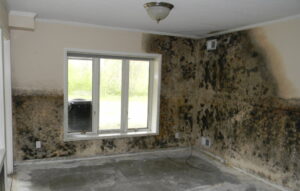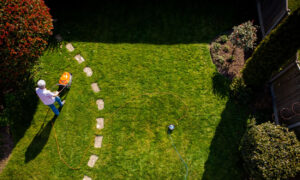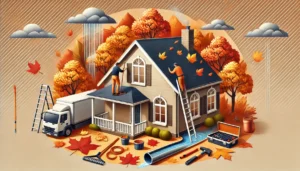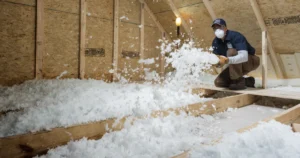With rising water costs and environmental concerns, many homeowners are looking for ways to conserve water. One of the simplest and most effective ways to reduce your water usage is by installing low-flow plumbing fixtures. These fixtures are designed to use less water while still providing the same level of functionality, allowing you to save water and money without sacrificing comfort. Here’s how you can save water with low-flow plumbing fixtures and why they are a smart investment for your home.
1. Install Low-Flow Showerheads
One of the easiest ways to save water is by upgrading to a low-flow showerhead. Traditional showerheads can use as much as 5 gallons of water per minute (gpm), while low-flow showerheads reduce water consumption to around 1.5–2.5 gpm without compromising water pressure.
- How to install and use low-flow showerheads:
- Choose a WaterSense-certified showerhead: Look for a showerhead with the WaterSense label, which ensures that it meets water efficiency standards set by the Environmental Protection Agency (EPA).
- Replace old showerheads: Simply unscrew the old showerhead and screw the new low-flow model into place. Most low-flow showerheads are designed to be easy to install with no professional help required.
- Take shorter showers: Combining a low-flow showerhead with shorter showers can significantly reduce your water consumption over time.
- Why it works: Low-flow showerheads maintain sufficient water pressure while using less water per minute, helping you reduce water waste in one of the highest water-using areas of your home.
2. Switch to Low-Flow Faucets or Faucet Aerators
Faucets are a major source of water use in the home, particularly in kitchens and bathrooms. Low-flow faucets or faucet aerators help cut down on water usage by controlling the flow of water without affecting performance. Standard faucets typically flow at 2.2 gpm, but a low-flow faucet or aerator can reduce that to 1.5 gpm or less.
- How to install faucet aerators:
- Choose the right aerator: If you’re not ready to replace your faucets entirely, you can install a low-flow aerator, which screws onto the faucet head to reduce water flow.
- Install the aerator: Unscrew the existing faucet head and replace it with the new aerator. This is a quick, DIY fix that requires no tools.
- Use water wisely: Even with a low-flow faucet, be mindful of turning off the water when not in use, such as when brushing your teeth or scrubbing dishes.
- Why it works: Faucet aerators mix air with water to reduce the amount of water used while still maintaining strong water pressure. This simple change can lead to significant water savings over time.
3. Upgrade to Low-Flow Toilets
Toilets are one of the largest sources of water consumption in the home, accounting for nearly 30% of the total indoor water usage. Older toilets can use as much as 3.5–7 gallons of water per flush, while modern low-flow toilets use just 1.28 gallons per flush (gpf) or less.
- How to choose and install low-flow toilets:
- Opt for a dual-flush toilet: Dual-flush toilets offer two flush options—one for liquid waste that uses less water (about 0.8 gpf) and one for solid waste (around 1.6 gpf). This allows you to control how much water you use with each flush.
- Look for WaterSense-labeled toilets: WaterSense-labeled toilets use at least 20% less water than standard models, saving thousands of gallons per year.
- Professional installation: While some homeowners can install toilets on their own, you may prefer to hire a professional plumber for installation to ensure the toilet is properly sealed and connected.
- Why it works: Low-flow and dual-flush toilets use significantly less water per flush, drastically reducing water consumption without sacrificing performance.
4. Opt for Water-Efficient Washing Machines
Laundry accounts for a substantial portion of household water use. If you’re in the market for a new washing machine, choosing a water-efficient model can help you save both water and energy.
- How to choose a water-efficient washing machine:
- Look for ENERGY STAR-certified models: ENERGY STAR-rated washing machines use about 25% less energy and 33% less water than standard models.
- Front-loading washing machines: Front-loading washing machines are generally more water-efficient than top-loading models, using as little as 10–20 gallons of water per load compared to 30–40 gallons for traditional top-loaders.
- Use the appropriate load size: Always run full loads of laundry when possible and use the correct water level setting for smaller loads to avoid wasting water.
- Why it works: Water-efficient washing machines use less water per cycle while still effectively cleaning clothes, helping you cut down on water use in one of the most water-intensive areas of the home.
5. Install a Low-Flow Dishwasher
Your dishwasher can also play a role in conserving water, especially if you upgrade to a more efficient model. Modern dishwashers are designed to use significantly less water than older models, while still getting dishes clean.
- How to maximize dishwasher efficiency:
- Use a water-efficient dishwasher: Look for a dishwasher that has earned the ENERGY STAR label. These dishwashers use about 3–4 gallons of water per cycle, compared to older models that can use 10 gallons or more.
- Skip the pre-rinse: Many newer dishwashers are powerful enough to clean dishes without the need for pre-rinsing. By skipping this step, you can save both water and time.
- Only run full loads: To get the most out of your dishwasher, make sure to run it only when it’s full. Running half-empty loads wastes both water and energy.
- Why it works: Low-flow dishwashers are designed to clean dishes efficiently with less water, making them an easy way to conserve water in the kitchen.
6. Check for Leaks and Fix Them Promptly
Even with low-flow fixtures installed, leaks can waste significant amounts of water. A small leak might not seem like a big deal, but it can add up over time. Fixing leaks promptly is key to maintaining a water-efficient home.
- How to check for leaks:
- Inspect faucets and pipes: Regularly check faucets, showerheads, and pipes for drips or leaks. Even a slow drip can waste gallons of water each day.
- Test your toilet for leaks: Add a few drops of food coloring to the toilet tank and wait 15 minutes. If the color appears in the bowl without flushing, you have a leak that needs repair.
- Replace worn-out parts: Leaky faucets or toilets often need simple repairs, such as replacing a washer, flapper, or seal. These inexpensive fixes can prevent large amounts of wasted water.
- Why it works: Fixing leaks not only saves water but also prevents potential water damage to your home.
7. Use Low-Flow Outdoor Fixtures
If you use water outside your home for gardening, lawn care, or washing your car, low-flow outdoor fixtures can help conserve water without sacrificing performance.
- How to save water outdoors:
- Install a low-flow hose nozzle: A hose nozzle with adjustable spray settings can help you control water flow when watering plants or washing your car.
- Use a drip irrigation system: Instead of traditional sprinklers, which can waste water through evaporation, install a drip irrigation system to deliver water directly to the roots of your plants. This method reduces water waste and promotes healthier plants.
- Water early in the day: Water your lawn and garden in the early morning to minimize evaporation and ensure that more water reaches the roots of your plants.
- Why it works: Low-flow outdoor fixtures help you manage water use efficiently, reducing waste while maintaining your garden or lawn.
Final Thoughts: Save Water and Money with Low-Flow Fixtures
Low-flow plumbing fixtures are a simple and effective way to reduce water consumption in your home, saving you money on utility bills while conserving this valuable resource. Whether you’re upgrading your showerhead, installing a dual-flush toilet, or investing in a water-efficient washing machine, these small changes can have a big impact on your home’s water use. By taking advantage of these water-saving solutions, you can enjoy a more sustainable home without sacrificing comfort or convenience.









